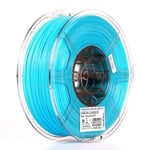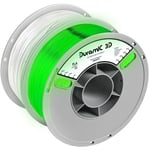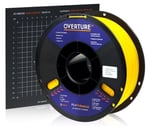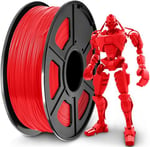FDM stands for “Fused Deposition Modeling”, which is the most popular 3D printing technology due to its accessibility and affordability. Besides obviously needing a printer, the key component in FDM is filament – a string of plastic that’s extruded through a heated nozzle onto the printer’s build surface. The filament is melted and deposited at specific coordinates, layer by layer, resulting in a 3D volume.
Nowadays, there are many filament materials, but the most common ones are PETG, ABS, and the ever-popular PLA:
- PETG (polyethylene terephthalate glycol-modified) is resistant to water and often used in applications related to food. It’s derived from a form of plastic you’re likely familiar with, PET, which has been commonly used for wrappings and bottles in the food industry for years, even before it was presented in filament form. In comparison with ABS and PLA, PETG is slightly more flexible and has a softer surface.
- ABS (acrylonitrile butadiene styrene) is a petrol-based material that’s well known for its toughness and high resistance to heat, electricity, and chemicals. Even though it has great mechanical properties, working with ABS can be tricky, as it needs higher temperatures, gives off a slight odor when printing, and contracts more when cooling.
- PLA (polylactic acid) is the most common and perhaps the most accessible filament type. Contrary to the other two, it’s not oil-based but made instead from corn starch or sugar cane as well as with other components. Although it’s still plastic, this composition makes it slightly less damaging to the environment than the previously mentioned filaments. PLA has many advantages like being affordable, printable at lower temperatures, and not requiring an enclosure or a heated bed (although the latter is always recommended for better adhesion).
In recent years, filament manufacturers have produced variations of these common filaments to improve upon their deficiencies. For example, some manufacturers take PLA one step further, giving it additional properties through the inclusion of additives. The resulting filament is known as PLA+.
In the article, we’ll dig deeper into what is PLA+ and present some of the best PLA+ filament options. Let’s dive in!
What Is PLA+
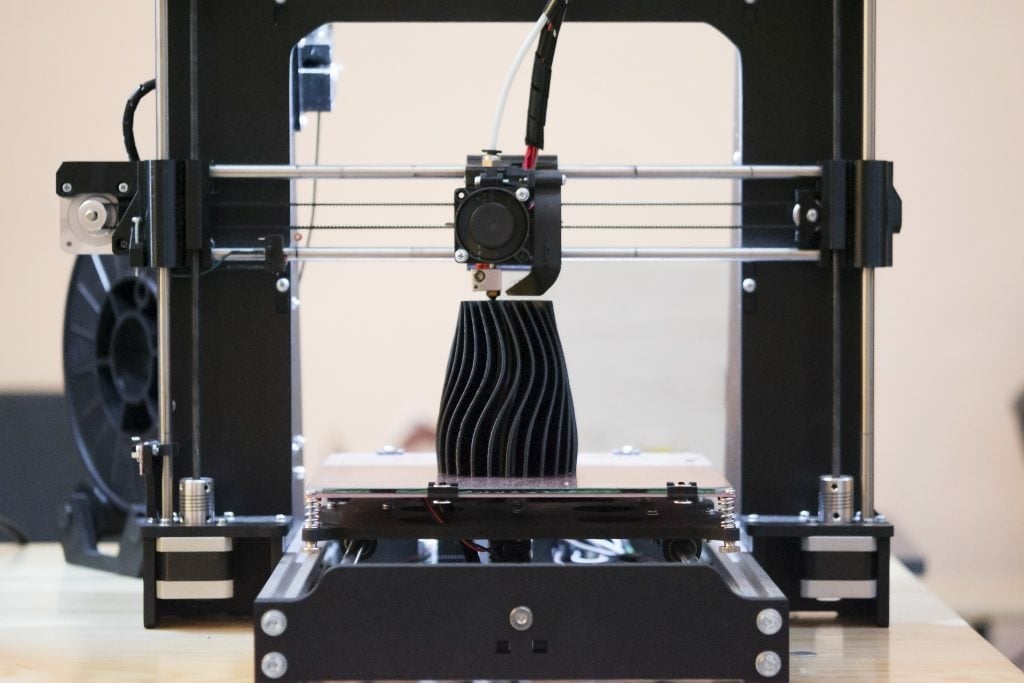
“PLA+” is a name frequently given to variants of PLA whose material properties have been enhanced through the use of additives beyond its traditional composition. To be clear, PLA+ is still PLA, as it has the same fundamental composition. The additives just give it a boost.
The additional properties or specific additives change from brand to brand, as does the name. You can find it as “PLA+”, “PLA Plus”, or “PLA Pro”, depending on the brand. The principle, however, is the same: It’s PLA but better.
Common Pros & Cons
According to manufacturers and users, some of the additional properties include a glossy finish, better layer adhesion, and up to four times the standard resistance to shear stress. Greater strength and reduced brittleness are also sometimes claimed.
Users of PLA+ should exercise some caution, though. For example, certain PLA+ products have been known to adhere poorly to the built plate. In such a case, printing with a brim is recommended. Some PLA+ filaments can also cause clogging, which could be resolved with greater printing speeds and lower retractions (a maximum of 2 mm). Further, the additives in the filament make it so that you need higher printing temperatures (200 to 230 °C). The settings overall seem closer to those required for ABS.
That said, the formula, mechanical properties, and printing settings can vary greatly depending on the manufacturer. As a result, when you’re first trying out a new filament, it’s recommended to run some trial prints with different settings to see which works better.
To better see the differences that can exist between different versions of PLA+, let’s go over five of the most popular products.
eSun
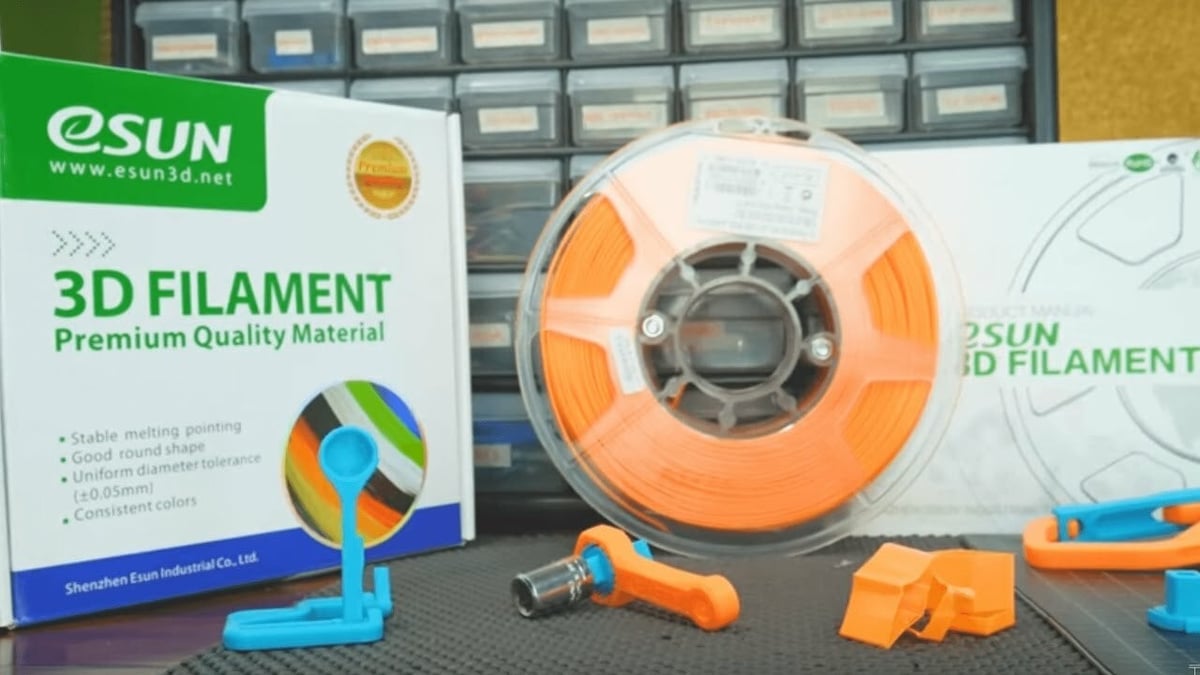
eSUN’s PLA+ filament is one of the most well known PLA+ options. According to the company, the filament’s main advantage is superior layer bonding. Their recommended printing settings are 205-225 °C for the nozzle and 60-70 °C for the print bed.
Users praise eSun’s PLA+ for its glossy finish, and they say it has very consistent properties throughout all the spool, which makes for consistent and quality printing. Out of all the featured brands, few have mentioned first-layer adhesion issues in connection with eSun – a big plus given that first-layer adhesion tends to be problematic to get right with PLA+.
- Price: ~$23/kg
- Diameter: 1.75 mm
- Tolerance: ±0.05 mm
- Amazon rating: 4.7/5
Duramic 3D
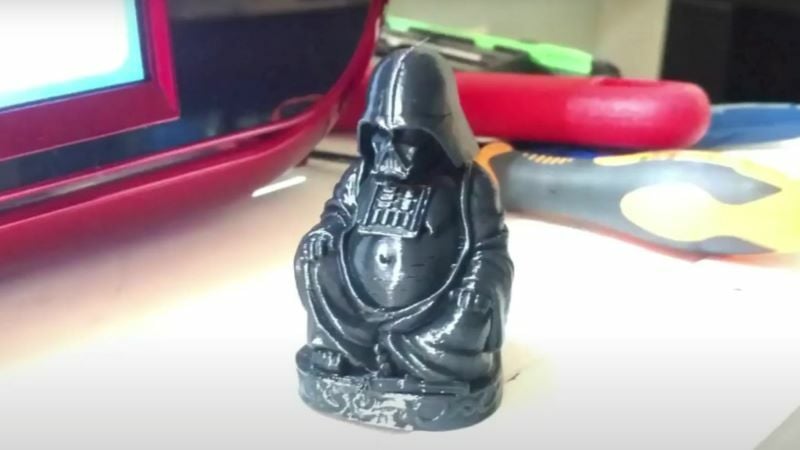
The manufacturer of Duramic 3D PLA Plus promises stable printing without clogging. Recommended print settings include printing temperatures of 220 °C (±10 °C) and a print speed between 40 and 80 mm/s. Duramic 3D says its manufacturing is very much focused on quality, which is why they can ensure consistent color and diameter.
According to reviews, it works better with fast cooling because prolonged heat on the lower layers can result in curling. Users also recommend using a sticking spray or a glue stick to facilitate first-layer adhesion. Other reviews also noted it has no odor, making it suitable for working in small spaces. They also mention the filament looks matte in the spool but becomes glossy when printed.
- Price: ~$20/kg
- Diameter: 1.75 mm
- Tolerance: ±0.05 mm
- Amazon rating: 4.6/5
Overture
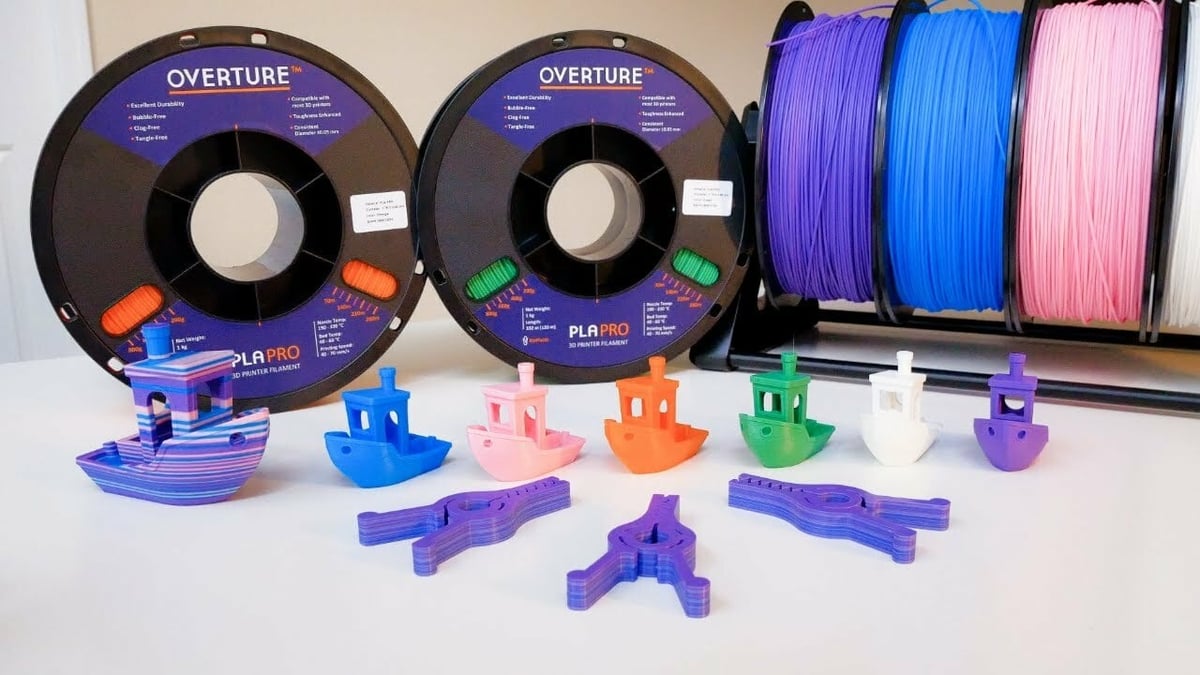
According to Overture, their PLA Professional filament has enhanced toughness: five times that of traditional PLA based on a Charpy impact test. They also say it has low shrinkage and great layer adhesion. The recommended printing temperatures are 190-200°C for the nozzle and 40-60 °C for the bed. A print speed of 40-70 mm/s is also recommended.
According to user reviews, the filament presents no issues with overhangs, it feels more rigid than standard PLA, and it’s odorless. Users suggest the use of brims to ensure adhesion; otherwise, the filament won’t adhere to the build plate properly. Users also say prints look matte when lower temperatures are used and glossy with higher temperatures.
- Price: ~$25/kg
- Diameter: 1.75 mm
- Tolerance: ±0.05 mm
- Amazon rating: 4.6/5
Sunlu
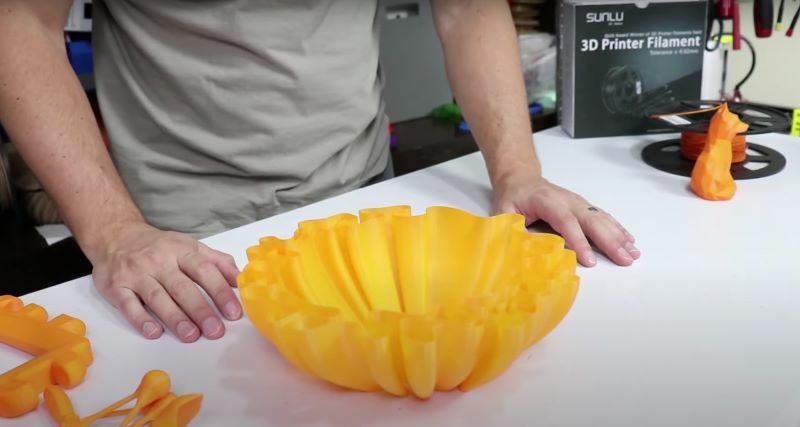
Sunlu is another well-known filament brand. According to the company, their PLA Plus filament is stronger and has a brighter color than traditional PLA. The recommended printing settings include a print speed of 40-80 mm/s and temperatures of 210-235 °C for the nozzle and 70-80 °C for the bed.
In terms of the reviews, people say the filament is easy to print and feels stronger than normal PLA. This is important because, in the reviews of some less-well-rated brands, people expressed finding no difference between the PLA and the PLA+. Additionally, in contrast to many other PLA+ brands, many reviewers said Sunlu’s filament presents no clogging at all.
- Price: ~$21/kg
- Diameter: 1.75 mm
- Tolerance: ±0.02 mm
- Amazon rating: 4.5/5
Jayo
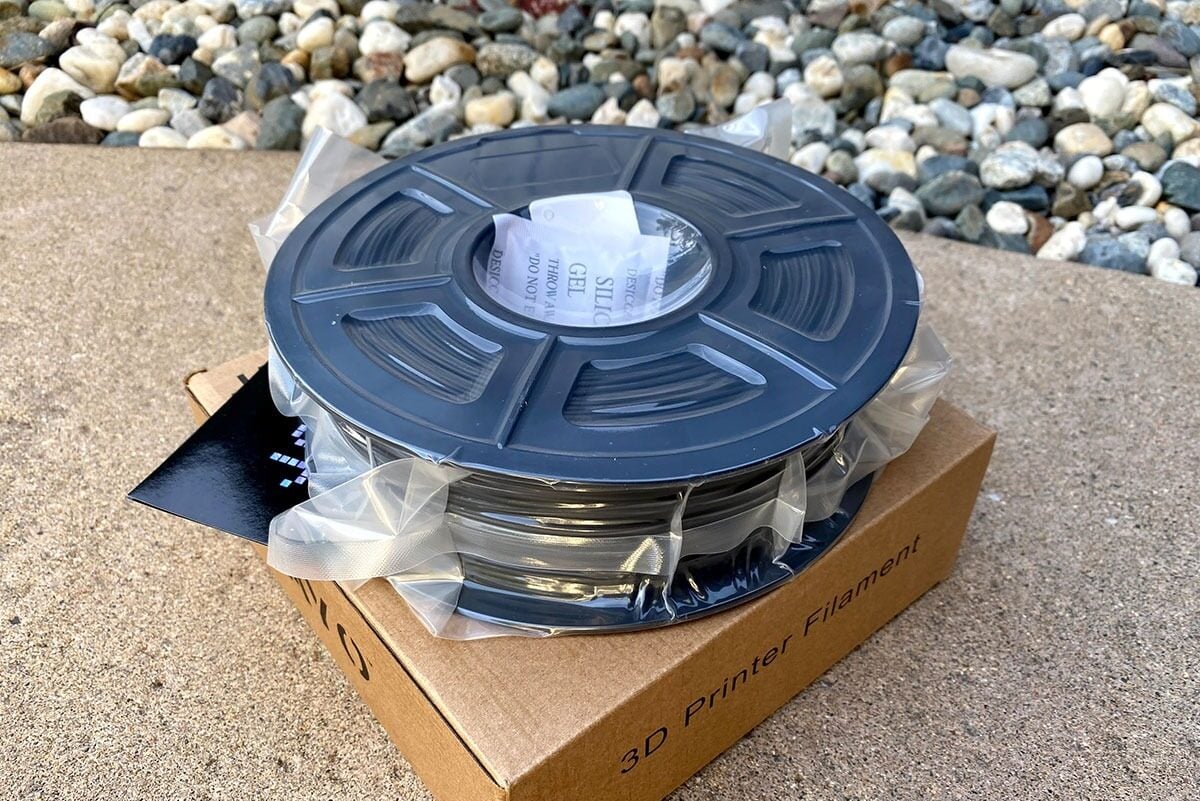
Jayo’s PLA+ filament is, according to the brand, less brittle and several times stronger than PLA. The recommended printing settings are 210-230 °C for the nozzle, 70-80 °C for the bed, and 30-90 mm/s for the print speed.
According to reviews, the filament has little to no stringing, and it’s very resistant to bending stress. Results look shiny, and layer lines are barely noticeable because of the filament’s good layer adhesion. People also consider the price to be affordable, especially given the quality of the filament and that it presents no issues even from the start. While some other PLA+ brands take a lot of experimenting to find the ideal temperature, users say any temperature within Jayo’s recommended range works well.
- Price: ~$23/kg
- Diameter: 1.75 mm
- Tolerance: ±0.02 mm
- Amazon rating: 4.4/5
License: The text of "The Best PLA+/Plus Filaments – Buyer’s Guide" by All3DP is licensed under a Creative Commons Attribution 4.0 International License.
CERTAIN CONTENT THAT APPEARS ON THIS SITE COMES FROM AMAZON. THIS CONTENT IS PROVIDED ‘AS IS’ AND IS SUBJECT TO CHANGE OR REMOVAL AT ANY TIME.

